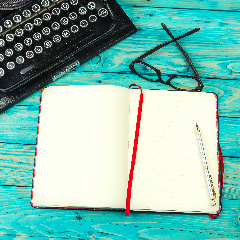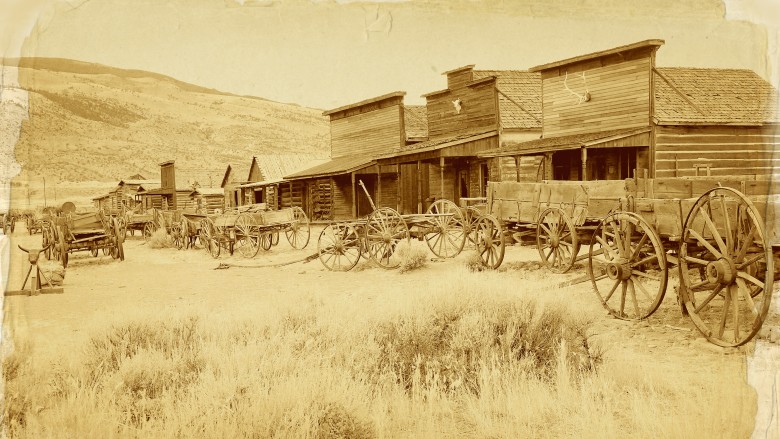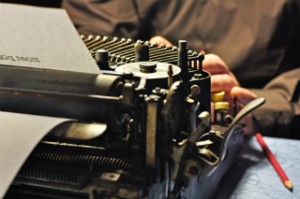As a writer of historical fiction, I’m always researching. It’s not just the big picture, either. Sure, I need to know the basics of life in the late 1800s, but I also need to know if a certain slang term was in use at that time, or what an expensive evening dress might have looked like.

Let’s look at the research process a bit, then. Your first step, of course, will be Google–maybe even Wikipedia. Just don’t make the mistake of thinking the latter is always correct. Remember that anyone can edit a Wikipedia article and write whatever they want. But Google will always net you a few gems you’ll want to bookmark and use over and over.
The trick to any search engine is to know your keywords. If you type “life in the late 1800s,” you’re going to get zillions of vague websites that don’t really tell you much at all. You need to narrow your search until you’re getting those laser-focused, scientifically-researched websites that will truly teach you what you need to know for your story. “Slang terms of 1870” is far better than “Slang in the Old West,” which is better than “Old-fashioned language.”
Your goal with Google (or whatever search engine you use) is the sort of website that reads like a scientific paper (“The Chinese as Medical Scapegoats: 1870-1905”) instead of a vague “The History of Chinatown.” In 99% of the cases, the more narrow the focus, the better the historical information included. Figure out exactly what you want to learn, then use that question as your search keywords.
Another good resource is the photograph site. Do the same sort of search, but add “photographs” to the keyword string. This will give you actual images of the period you’re researching, which you can use in your descriptions of setting, clothing, and even in character creation. Pinterest usually has some interesting photos, but they’re not likely to have the best descriptions of the images, the way a historical website will.
I’ve found that pretty much anything I’m interested in will have someone else who’s interested enough to create a website (or at least a blog entry). It’s rare that I can’t find anything at all, and in that case, I turn to the secondary research method (in today’s world, at least): the library. You’re not always going to be able to visit the library you really need, which will be the one in whatever city your story is set. Within those walls, you can find old newspapers (or microfiche copies), rare books about the city, “Who’s Who” books, and maybe even antique memorabilia from the time period you’re interested in. If you can afford the travel, visit the town’s library and ask the research librarian for help.
Old maps are also good research tools. You don’t need to invest in an original though–a good copy or photo of one will do nicely. Maps will tell you where the streets were, what areas were residential or business, and sometimes even what shops or businesses were in each district. I once found a map that showed every brothel in San Francisco within a certain time period–invaluable for the book I was writing at the time.
Finally, check out rare book dealers. You can often locate valuable information in small-print, local books like “Who’s Who” or those histories of city neighborhoods. A bookseller would be more familiar with what might be available, or can keep an eye out for books about whatever year you’re interested in. As an aside, while we’re talking about old books, you can often find antique books you can read online for free. Just find the name of a book you’d like to read and type in “read ___ online free” into the search bar and see if it’s available. I’ve found many interesting tomes that way.
Research is to historical fiction what muscle memory is to an athlete. It’s a necessary part of the writing process, whether or not you enjoy digging for information. What about you–have you found any tried-and-true research sites you return to over and over?
The technical definition of historical fiction is “a literary genre in which the plot takes place in a setting located in the past.” That’s pretty vague, but then again, the genre is a pretty vague one if you’re being honest.

But when, exactly, is the past “historical?” Celadon books suggests you give it a minimum of 50 years from your current time. That seems reasonable: 50 years puts you firmly in the time of your grandparents, which is when most people see a big difference in society and culture. You can go as far back as you wish but start at least 50 years ago.
The thing that makes historical fiction so popular and so believable is the setting. Historical fiction should be set in a real place and time, even if characters and parts of the setting are fictional. My two heroes, for example, live in the very real city of San Francisco, California in the very real time of the 1870s. Their house is fictional but would fit into the houses along that street at that time. I’ve done a lot of research, so their home city is portrayed as it actually would have been then, to the best of my abilities.
There are six basic divisions of historical fiction:
- Biographical – these stories tell the fictionalized account of a real person’s life, or of a real group of people.
- Historical Epics – a series of books that often span several eras.
- Historical Adventure – in these books the protagonist goes on a journey or has a series of adventures before reaching his or her goal.
- Historical Romance – the main focus of the book is the romance, but the story is set in the past.
- Historical Mystery – the main focus of the book is the mystery, but the story is set in the past.
- Historical Fantasy – the author changes certain facts from the past and keeps others the same, as in an alternate history or time travel story.
Historical fiction wasn’t recognized as a literary genre until the early 1800s. One of the first popular books in this new category was Sir Walter Scott’s Ivanhoe, set during the Age of Chivalry. Nowadays, the 1960s qualify as “historical,” so you’ve got a lot of time to play with. Whether you write about mail order brides in the Old West or 12th Century nobility, if it’s set in the past, it’s historical fiction.
In a 2015 article called “7 Elements of Historical Fiction,” M.K. Tod says that all fiction writers must consider seven critical elements – as well as bringing the past to life:
- Character: your characters must appear to be from the era you’ve set them in, from their clothing to their mannerisms and beliefs. That means you need to do your research and find out how a peon would differ from a nobleman, or how a beggar would act as opposed to a shopkeeper.
- Dialogue: you shouldn’t try to write exactly as those old writers did. Such language today is stultifying and quite difficult for your reader to wade through. Do sprinkle in words or phrases that get across the idea that they’re really in your past world, though. One thing to be careful of is slang – it’s changed greatly through the years and a word that means one thing today might have meant something completely different in the past.
- Setting: this means time and place and is the most essential part of a historical fiction writer’s task. Your readers need to feel transported into the past within the first paragraph or two of your story. Do your research and find those little details that will create a vivid setting for your readers.
- Theme: your theme, too, must reflect the era in which you’re writing. What does loyalty mean in 14th Century Japan as opposed to the modern era? How was coming of age different in your era?
- Plot: your plot must rotate around actual historical events that would have taken place at that time. This is especially true if you’re including an actual historical figure in your story.
- Conflict: your conflict must also reflect your chosen era. People often faced different sources of conflict in the past, and you must make sure that your conflict is reasonable for that place and time.
- World Building: as Harry Sidebottom (author of the Warrior of Rome series) said, “the past is another country; they not only do things differently there, they think about things differently. When building your world for your readers, you need to think about such things as customs, social arrangements, family environment, government, politics, and physical geography.
Tod also gives a list of topics you should consider when doing your research: attitudes, language and idiom, household matters, material culture, everyday life, historical timelines, occupations, diversions, regulations, vehicles, travel, food, clothing and fashion, manners and mannerisms, beliefs, morality, the mindset of the time, politics, social attitudes, wars, revolutions, prominent people, major events, news of the day, neighborhoods, gossip, scandals, international trade, travel, how much things cost, worries and cares, highways and byways, conveyances, landscape, sounds, tastes, smells, class divisions, architecture, social preoccupations, religious norms, cataclysmic events, legal system, laws, regulations, weather, military organization, cooking, sex, death, and disease.
What do you research for your stories?
Research is a big part of any author’s life, but even more so for those of us who write historical fiction. Today, it’s even easier to do this research. You can sit in your office in your pajamas and read newspapers from the 1800’s, or search through out-of-print books at the coffeeshop.
One good place to get started is THIS website – a guide to using primary research sources from the Reference and User Services Association. They also provide a list of some research sites.
Here are some more good resources to check out:
- Archive Grid – a catalog of more than 2 million primary and secondary source materials from institutions around the world, from Yale to the Netherlands’ Bibliotheek Universiteit Leiden -and it’s searchable by keyword. Not all of the material is openly accessible, but the massive amount of valuable information stored here makes it worth the trouble.
- David Rumsey Map Collection – more than 48,000 historical maps and images. Although most of the rare 18th and 19th century maps are from North America, you can find Europe, Asia, and Africa as well.
- Feeding America: The Historical American Cookbook Project – a really fun database of full-text, searchable transcriptions of cookbooks dating as far back as the 1700’s. It also includes a glossary of historic cooking terms and images of old cooking utensils.
- Food Timeline – lists of food prices dating back to the 1600’s – mostly American, but there are some global prices given.
- Google Books – more than 30 million digitally scanned books, most of which are no longer in print.
- Newspaper Archive – a collection of newspapers dating back to 1607. This requires a subscription, but it’s worth it if you’re doing serious research
- New York Public Library Digital Collections – more than 800,000 images, including historical maps and photographs, manuscripts, vintage posters and rare prints.
What are your favorite research sites?
